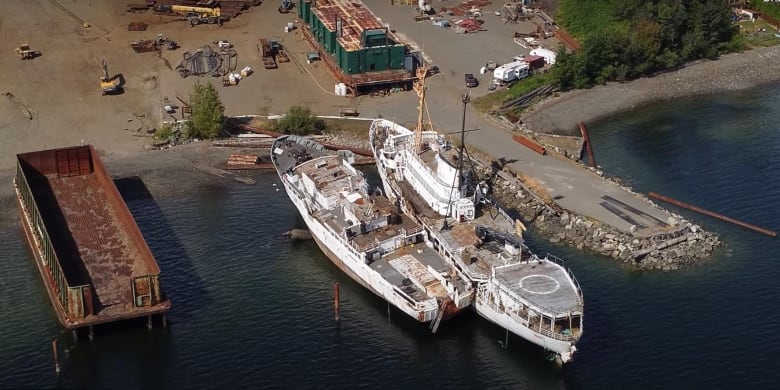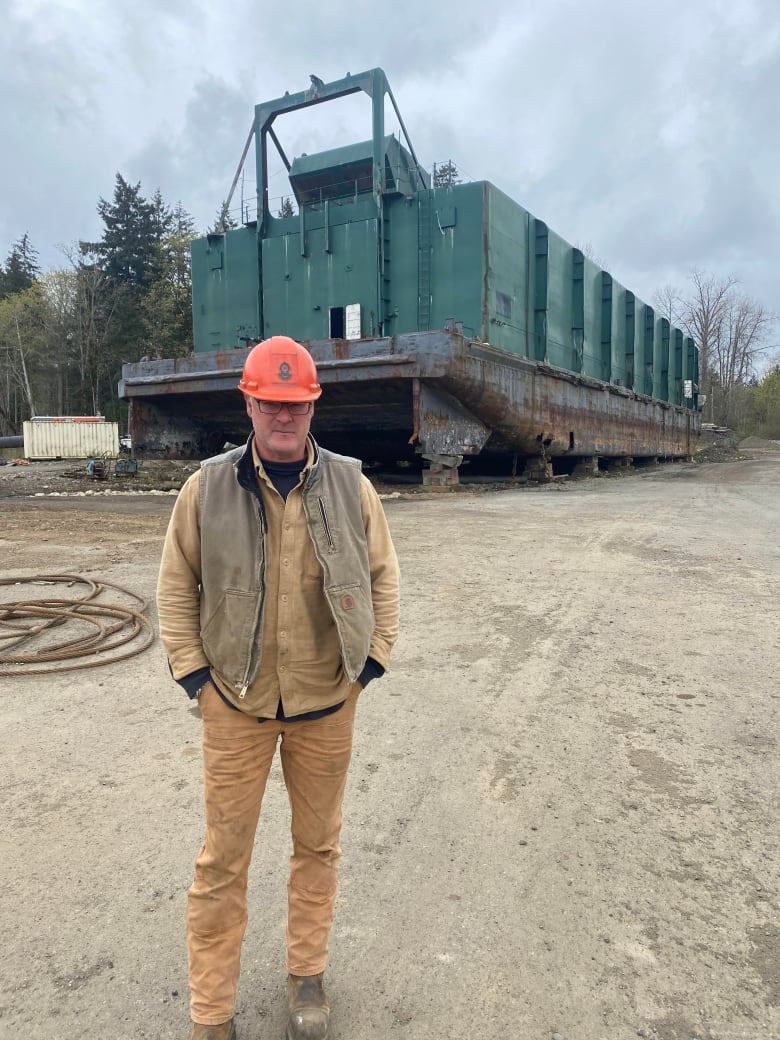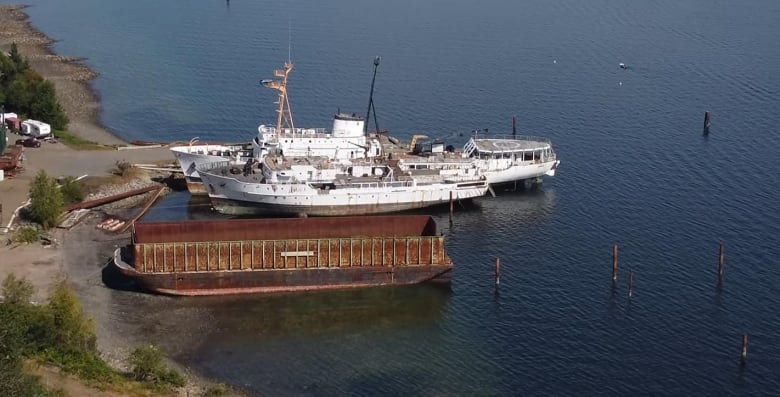A senior who used a drone to keep tabs on an industrial Vancouver Island ship-breaking operation has won a partial legal victory, with the judge rebuking the company who sued her for publicizing videos she captured.
Mary Reynolds says she’s happy with the ruling and plans to keep flying her drone daily, to keep watch and try to prevent pollution.
“These guys are prevented from trying to bankrupt people who dare speak out,” said the 73-year-old retiree who lives with pet parrots in a modest home.
Reynolds started flying her mini drone over the Union Bay site a few years ago, frustrating workers at Deep Water Recovery Ltd., an operation that dismantles derelict barges and ships. She then published some of the close to 300 videos she gathered online and was outspoken about her hope to shut down the marine demolition business that she fears is polluting the shoreline about 30 kilometres north of Qualicum, B.C.
“I don’t do this for personal gain. Everything they are doing there is wrong,” said Reynolds.
The relationship between Reynolds and the company heated up to the point where there were confrontations that lawyer Jason Gratl says intimidated his client. She sought a restraining order alleging a “volatile and out-of-control” man snatched her drone and others yelled obscenities or called her a troublemaker.

Mark Jurisich, Deep Water Recovery’s owner and director, and four unnamed staffers responded with a counter claim to try to prevent her from flying the 250-gram mini drone over the site and sharing video in what they described as a “malicious” campaign to destroy the business.
Gratl said there’s no Canadian case law around drone use over ship-breaking yards. So he and Reynolds filed an application under the Protection of Public Participation Act, defending Reynolds’ right to gather and share video of the site for public interest reasons.
Partial anti-SLAPP victory
The Protection of Public Participation Act — colloquially referred to as anti-SLAPP legislation — protects people who speak out against larger more powerful entities on matters of public interest.
On Monday, B.C. Supreme Court Justice J. Gareth Morley dismissed part of the counterclaim involving claims for damage for the dissemination of the drone footage.
Morley’s ruling said the company’s characterization of Reynolds’ flyovers as malicious was “troubling and over the top.”
The right to fly the drone over this specific kind of industrial site — and whether that’s an invasion of privacy — remains in play, but the attempt to sue Reynolds for damages is dead, explained Gratl.

“It was inappropriate to bring a claim for punitive damages or to attempt to restrain her from disseminating drone footage. It’s in the public interest to foster debate about environmental, injury or environmental problems of this sort,” said Gratl.
“Reynolds’ work has led to numerous federal and provincial inspections and findings by the Ministry of Environment that the ship-breaking operation has contravened environmental statutes and that they’ve been issued citations and fines.”
Pollution clean-up ordered
On March 15, B.C.’s Ministry of Environment and Climate Change Strategy ordered the company to stop the release of pollution and monitor and report discharges from the site. The abatement order says the company is illegally allowing toxic effluent to run into Baynes Sound on Vancouver Island’s east coast. Testing of site runoff confirmed high concentrations of pollutants, including copper, iron, zinc and cadmium, according to the environmental order.
The company could face penalties of up to $300,000 in fines and six months of jail time if it does not comply with the order.
Jurisich described Reynolds as a “woman with a long history of trouble” and told CBC he is frustrated with the daily drone flyovers of his “transparent” operation.
Name-calling on both sides
As for the application decision under the Protection of Public Participation Act, Jurisich said it’s a legal tool to protect people from “being attacked by maybe deep-pocketed companies.”
“We’ve done nothing to stop Mary Reynolds from saying whatever she chooses to say. I mean, she goes on a blog and calls our employees names and calls me a thug,” he said.
Jurisich said his legitimate ship dismantling operation sits on long-contaminated industrial land and is being targeted by locals with political motivations and concerns about property value. He said federal officials have no major concerns with the site, which at one time had a coal rail line and two landfills.
“It’s certainly not an environmental issue because, I think if it was, it would be shut down,” said Jurisich.
The K’ómoks First Nation and other locals are opposed to Jurisich’s operation.
In 2022 the Comox Valley Regional District applied to the B.C. Supreme Court to force the company to stop dismantling ships on site, citing bylaw non-compliance.
Two years ago the Department of Fisheries and Oceans (DFO) ordered the removal of three vessels grounded on the shore to protect fish habitat.
Jurisich said all the controversy has devastated his business — which is part of a necessary industry on the West Coast, where ship dismantling services are in demand.




